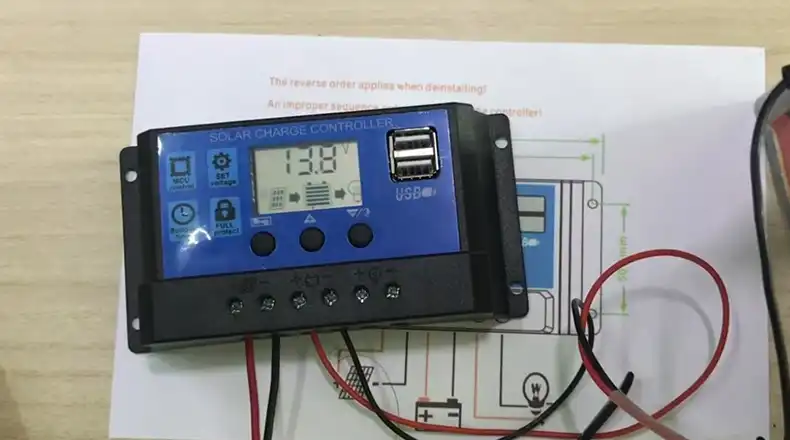
Solar charge controllers have different settings that need to be adjusted in order for them to work properly. They set up the output parameters of the power so that the battery bank can be charged at the most optimal voltage.
Setting up a PWM (Pulse Width Modulation) solar charge controller involves configuring various parameters to ensure efficient charging and protection of your battery bank. In this article, we will describe in detail how to adjust the settings on a PWM solar charge controller in order to effectively charge your battery bank.

Below we have described the PWM settings that you need to tinker with in order to make the charging process more efficient.
In most charge controllers, you can select the battery type. Primarily, there are flooded, AGM, gel, and lithium-type batteries. They each have different charging characteristics. So, you need to make sure that you choose the appropriate type for your battery bank.
Make sure that you have set the charge controller to the appropriate battery voltage. Depending on your battery bank setup, there are options such as 12V, 24V, or 48V, etc. are available.
There are two basic types of charging parameters. Those are bulk and float charge parameters. Here’s how you should set each.
The bulk charge voltage is the initial high voltage applied to quickly charge the battery. The value depends on the battery type and voltage. For example, a 12V flooded battery might have a bulk charge voltage of around 14.4V.
The float charge voltage is the voltage applied after the battery reaches its full charge. It’s a maintenance voltage to keep the battery topped up. For a 12V flooded battery, the float voltage can be around 13.5V.
This option may not be available in your unit, but some PWM charge controllers have load outputs to power DC loads directly. Configure load settings such as load disconnect voltage (when loads are disconnected to protect the battery) and load reconnect voltage.
Temperature compensation allows the charge controller to adjust the charging voltage based on the current battery temperature. Depending on the model, this option may or may not be available in your solar charge controller. But if it is, leave it on. It can greatly prolong your battery life.
If you have flooded lead-acid batteries, consider enabling equalization. This is a controlled overcharge, which is meant to mix the electrolyte and prevent stratification. Set the equalization voltage according to the manufacturer’s recommendations.
The main function of an LVD solar charge controller is to prevent the connected batteries from being discharged beyond a certain voltage threshold. This threshold is usually set to a safe level to ensure the battery’s longevity and performance. Deep discharges can damage batteries, particularly lead-acid batteries commonly used in solar systems. So, set the voltage at which the controller disconnects loads to protect the battery from over-discharge. This helps prevent damage to the battery.
If the controller has load outputs, check if you can set timers for when the loads are turned on and off. It will allow you to customize your load times settings, increasing efficiency and prolonging battery life in the long run.
Some controllers provide real-time monitoring of charging and battery status. Familiarize yourself with the display and any error codes that might indicate issues. Always keep a keen eye on the monitoring data.
Average PWM charge controllers have a limited capacity to convert solar panel voltage to current, typically ranging from 75-80%. This is due to their simplified charging function which pales in comparison to the efficiency of MPPT.
You can think of the PWM (pulse width modulation) controller as an electronic switch between the solar panel and the battery. It is flicked on and off as needed to hold the battery voltage.
Remember, the optimal settings can vary based on the specific charge controller model, battery type, and system configuration. Always consult the charge controller’s manual and the battery manufacturer’s recommendations when adjusting these settings. If you’re unsure, it’s a good idea to seek guidance from a professional or someone experienced in solar power systems.
- Solar Expert and Engineer
With a background in engineering and a passion for sustainability, ABC is your go-to source for all things solar. Having worked on solar projects big and small, he brings a practical approach to solar panel installation and troubleshooting. From harnessing solar energy to navigating technical hurdles, count on him to shed light on your solar journey.